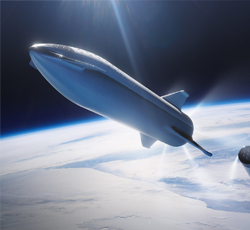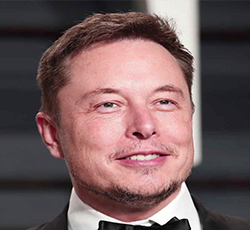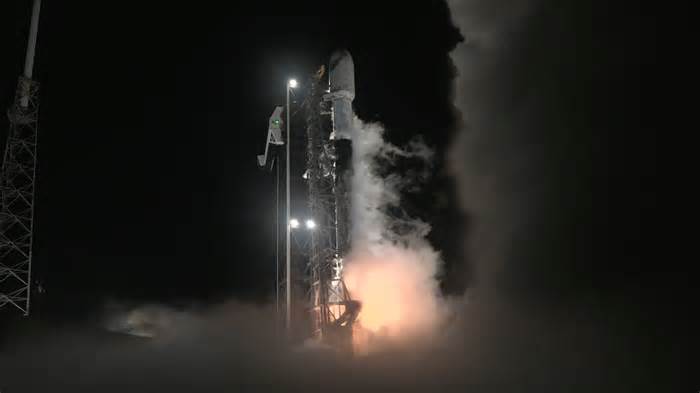
Why Tesla’s Model 3 will be the most important electric car of our time - Mashable
- by Mashable
- Jul 12, 2017
- 0 Comments
- 0 Likes Flag 0 Of 5

Lance Ulanoff
Lance Ulanoff was Chief Correspondent and Editor-at-Large of Mashable. Lance acted as a senior member of the editing team, with a focus on defining internal and curated opinion content. He also helped develop staff-wide alternative story-telling skills and implementation of social media tools during live events.
Prior to joining Mashable in September 2011 Lance Ulanoff served as Editor in Chief of PCMag.com and Senior Vice President of Content for the Ziff Davis, Inc. While there, he guided the brand to a 100% digital existence and oversaw content strategy for all of Ziff Davisâ Web sites. His long-running column on PCMag.com earned him a Bronze award from the ASBPE. Winmag.com, HomePC.com and PCMag.com were all been honored under Lanceâs guidance.He makes frequent appearances on national, international, and local news programs including Fox News, the Today Show, Good Morning America, Kelly and Michael, CNBC, CNN and the BBC.He has also offered commentary on National Public Radio and been interviewed by newspapers and radio stations around the country. Lance has been an invited guest speaker at numerous technology conferences including SXSW, Think Mobile, CEA Line Shows, Digital Life, RoboBusiness, RoboNexus, Business Foresight and Digital Media Wireâs Games and Mobile Forum. Sign Me Up
By clicking Sign Me Up, you confirm you are 16+ and agree to our Terms of Use and Privacy Policy.
Thanks for signing up!
'This is Tesla’s first and potentially last opportunity to take them out of the purely luxury- and rich person car segment.'
The other issue, and it may be the biggest one, is availability. Some of these EV cars, like the Kia Soul EV, are only sold in California. According to a 2015 study, California currently accounts for 40% of the EV market.
Why California? It’s one of the few states that has an active mandate to put zero-emissions cars on the road, 1.5 million by 2025. By 2018, 10 states could have similar rules on the books.
That doesn’t entirely explain why the limited EV options from major auto manufacturers sometimes feels like lip service.
What does, though, is CAFE or Corporate Average Fuel Economy. This Federal mandate requires an auto manufacturer’s fleet (encompassing all makes and models) has an average fuel economy of 55 mpg by 2025 (President Donald Trump is seeking to roll back these standards). Having an all- electric, long-range, zero-emissions car in the fleet immediately helps balance out trucks and SUVs.
“The vast majority [of these EVs] are ‘compliance cars,’” said Sexton. She contends that auto companies aren’t interested in selling these EVs at volume, just enough of them “to get the carbon credits they need.”
Tesla sells only electric vehicles, so that’s clearly not part of its go-to-market strategy, and the Tesla Model 3 is being sold nationally, two factors that instantly set the Model 3 apart from the competition.
And, of course, there is that undeniable cachet.
That certain something
Every single Elon Musk tweet is analyzed for its significance, especially as it relates to Tesla, current model capabilities and future options. His tweet of the first production Model 3 rolling off the assembly line collected 42,113 retweets and 148,943 likes.
Tesla’s forums are full of die-hard fans discussing the minutiae of the Model 3 and agonizing over delivery dates. Most have already ordered and many are concerned that they won’t see a car until 2018 (which is likely). The first batch of 325,000 Model 3s won't roll off the assembly line at once. It will take months to deliver them all.
“I ordered the Model 3 the day they were available. As an existing Tesla owner, I believe we are pushed to the front of the queue, but we'll see how it all works out,” DragTimes Editor Brooks Weisblat told me via email.
Weisblat and I met a couple of years ago when he was racing Tesla Model S P85Ds. A longtime Tesla fan, he wondered why Tesla was waiting to release the car’s detailed specs, but is fine waiting to learn more until after the launch event later this month.
“I plan to drive the 3 for a while and decide to either keep it, or if I like my Model S better, I will hand the Model 3 over to my Dad who currently drives a BMW i3,” he wrote.
Weisblat seemed comfortable rolling with whatever punches Tesla delivers along the Model 3 production route, but Sexton believes the company may not be so lucky as its more affordable EV opens the floodgates to a new kind of Tesla customer.
“[The Tesla Model 3] takes them out of that camp of people who are simply super fans to ones that will not tolerate things that have happened on recent products,” she said, pointing to recent quality issues with the Model X.
Even though Tesla’s hundreds of thousands of waiting Model 3 customers will want their cars now, Sexton counsels a slow and steady approach for the company. “It would be best to go slow and make sure first customers have a good experience with the product,” she told me.
Plus, if things go sideways for Tesla – quality issues, a scramble to recover, inconsistent delivery and dwindling revenue stream – it could rock the company. Tesla may be worth more than Ford and GM, but it probably doesn’t have the cash cushion to sustain losses the way, say, a GM does with the low-selling Bolt.
The Tesla Model 3 is 'an aspirational example of EVs'
There are, obviously, other risk factors that could sap the momentum out of Tesla’s drive to transform the EV industry. All those Model 3 cars are going to need a lot of fresh batteries. Musk built his own battery manufacturing plant in Nevada, the aptly-named Gigafactory, but it’s not at full capacity. It started making Powerwall home batteries and only recently began producing batteries for the Model 3. That should change by 2018, when the Gigafactory expects to produce enough batteries to supply cells for at least a half a million EVs.
Sexton sees the economies of scale inherent in owning your own battery factory, but has a concern.
“They need to make sure that plant remains flexible as new technologies come down the line,” she said and pointed to Nissan, which recently abandoned its own EV battery manufacturing facilities in favor or newer technology from LG.
What is more likely, though, is that, as the Model 3 does arrive in customers' hands around the country, the EVs generate an intense feeling of FOMO for consumers and car enthusiasts.
Sexton noted that the Tesla Model 3 is “an aspirational example of EVs” and has a cache that the Nissan Leaf and Chevy Bolt simply do not share.
If Tesla can keep up with demand, the Model 3 will mark the end of its EV boutique existence. The car has the potential to create an iPhone-like buzz in the auto market and industry. Its appearance on the road will excite other drivers and its entrance into the market should be cause for concern among other industry players.
“I do see the Tesla Model 3 being a tipping point that will make them more competitive,” Bajarin, the analyst, said, “especially in the mid-price range, but it will also serve as a way to get the major auto dealers to provide similar models and designs to stay competitive themselves.”
Featured Video For You
Please first to comment
Related Post
Stay Connected
Tweets by elonmuskTo get the latest tweets please make sure you are logged in on X on this browser.






 Energy
Energy

















